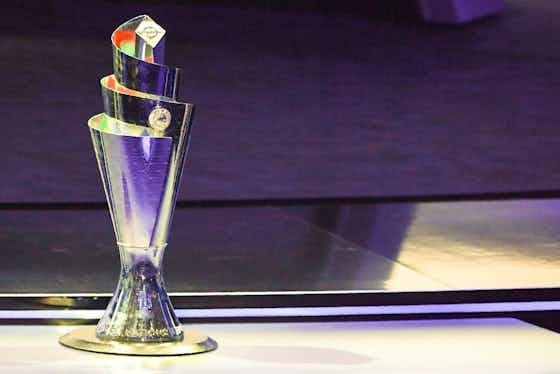OneFootball
Lewis Ambrose·4 September 2018
Uefa Nations League: What it is, how it works and why it exists

In partnership with
Yahoo sportsOneFootball
Lewis Ambrose·4 September 2018

The international break is here and this Thursday marks the start of the long-awaited Uefa Nations League.
Uefa’s new international tournament is supposed to take the place of European Championship qualifying play-offs and friendly matches, meaning no international break is meaningless ever again. Hopefully.
There are concerns that the money and success will just stay at the top with the new format, with the opportunity to develop and compete wrestled away from smaller European nations.

Uefa’s brand new tournament with a complicated format.
The idea is to render dull international friendlies a thing of the past. The Football Associations and their players, coaches, fans are bored of watching England/France/Germany take on San Marino and Kosovo.
Instead, Uefa want all 55 member nations to take part in one enormous competition, consisting of four leagues (A, B, C, D), which each include four groups (1, 2, 3, 4).
In case the bigger countries aren’t enticed by the idea, their league is decided by their world ranking and Uefa plan to use this format to eventually entirely get rid of European Championship and World Cup qualifying matches.
Games will have to be taken seriously.

Make sure you’re sitting down and have something to drink nearby, this is about to get unnecessarily complicated.
League A contains Europe’s 12 best ranked teams (at the time of the draw, which was in January).
League B contains the next 12.
League C contains 15.
League D is left with the last 16 teams.
So, the four groups in League A are made up of three teams each, the same for League B.
In League C, Group 1 contains three teams and the remaining groups will each contain four teams.
And finally, each of the four groups in League D consist of four teams.
Still with us?
The winners of the League A groups will be sent to the dramatic sounding Final Four competition in the summer of 2019.
Meanwhile, teams who are top or bottom of their groups will face the prospect of promotion and relegation. Yay for mobility!
Does it need to be this complicated? We aren’t so sure either.

Because you can’t wait, right? The action begins this Thursday!
Matchday 1: 6–8 September 2018 Matchday 2: 9–11 September 2018 Matchday 3: 11–13 October 2018 Matchday 4: 14–16 October 2018 Matchday 5: 15–17 November 2018 Matchday 6: 18–20 November 2018 Finals draw: early December 2018 Finals: 5–9 June 2019

That’s right, there’s more!
Qualifiers for Euro 2020 will begin in March 2019 (rather than September 2018, which would be the usual start date) and continue like normal but the play-off stage has now been scrapped.
Instead, each Nations League group winner will go into the play-offs, so there are 16 teams in the play-offs.
If a group winner has already qualified for Euro 2020, their play-off place will be taken by the next best ranked team in their league.
Each League will have its own play-off path, consisting of two single-leg semi-finals and one final. The winner of each final will take one of the final four places at Euro 2020.
Got it? Thought so.
Let the fun begin!


Live




Live


























































